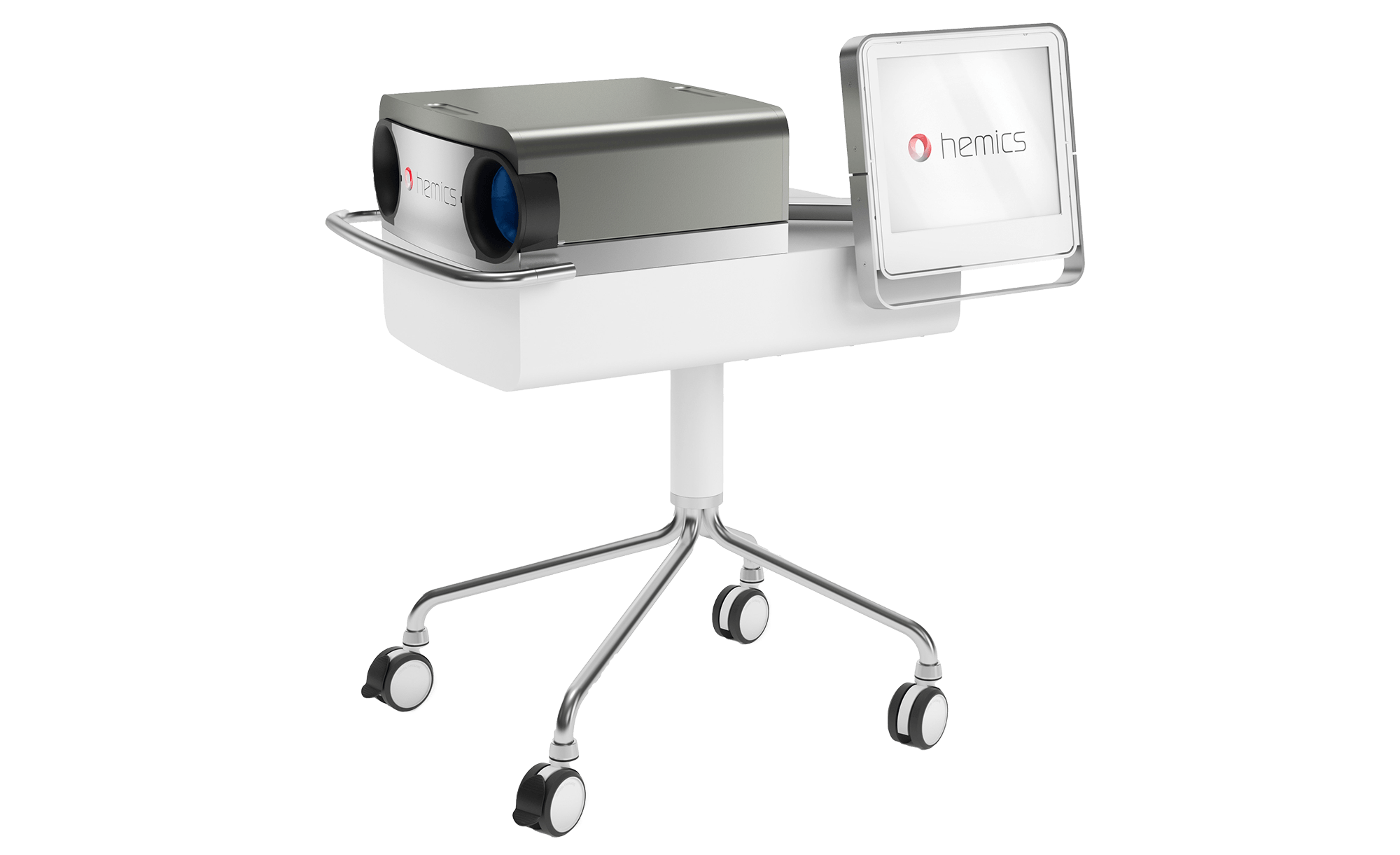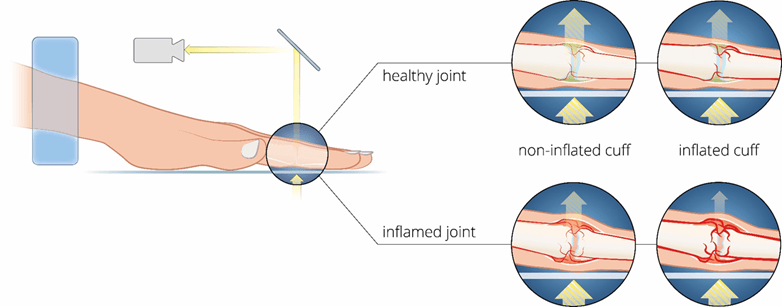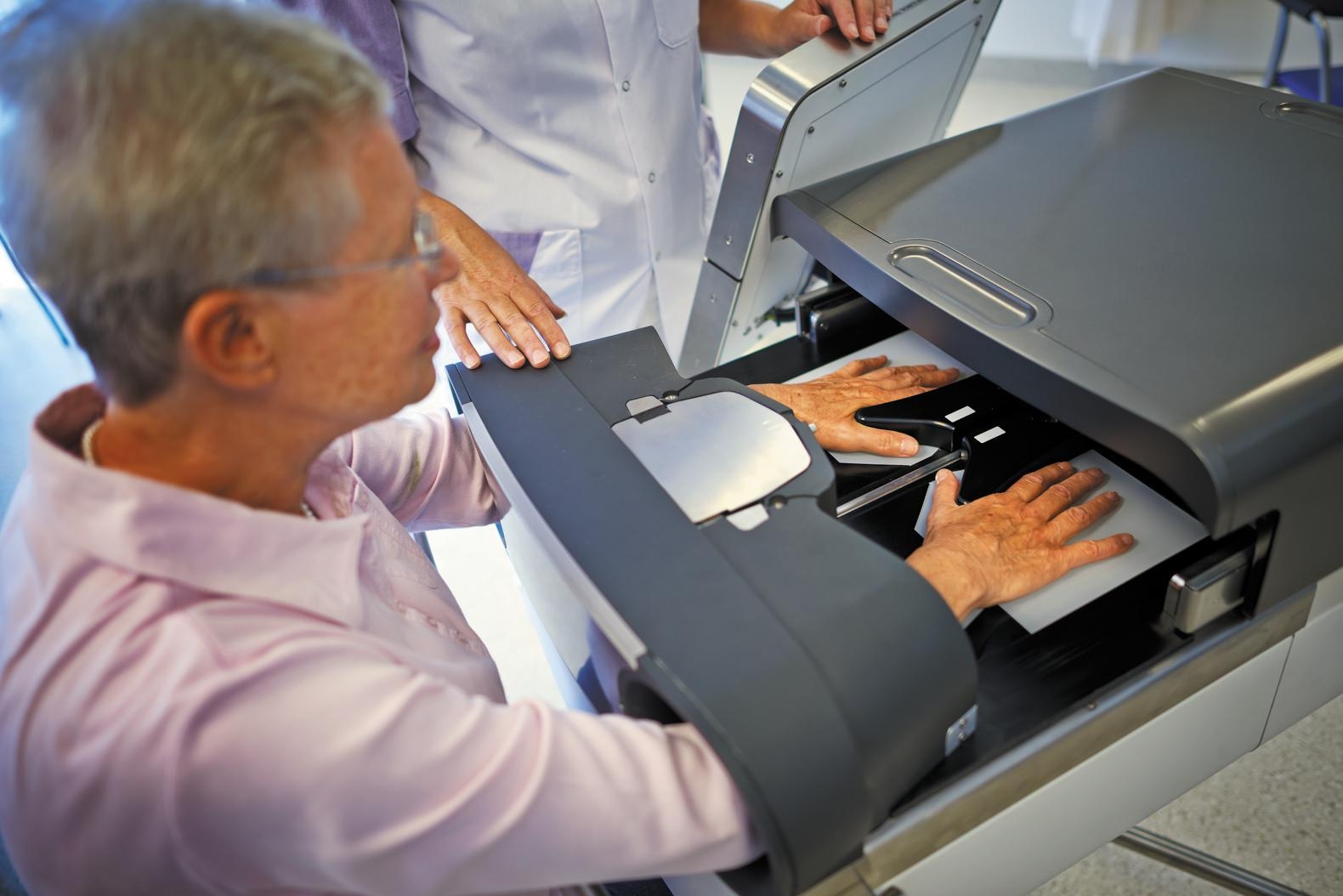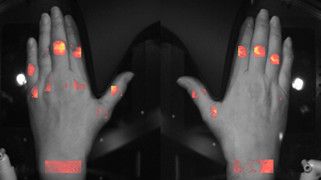the device.
In early Rheumatoid Arthritis (RA), caregivers use tight control and treat-to-target to reach disease remission as soon as possible. This reduces the progression of irreversible tissue damage at later stages and leads to significantly improved patient outcomes compared to the traditional care process. Systematic monitoring of disease activity is becoming increasingly important in early and established RA, as the aim shifts towards optimal medication levels and tapering medication when possible. Hemics' HandScan is the only non-invasive optical imaging technology that supports the rheumatologist in objective inflammation assessment. With the HandScan, it only takes several minutes to visualize the inflammation levels in the joints of hands and wrists. The device is safe, easy to use in day-to-day care and can be used as frequently as needed for tight control treatment of RA. The scanner can be operated by doctors, nurses and any other trained staff. The HandScan is connectable to the Hospital Information System and can integrate with a Picture Archiving and Communication System (PACS).

technology.
Inflammation is marked by redness, swelling, and warmth due to vascular changes such as vasodilation and increased permeability. While visible, inflammation is hard to quantify. Our patented Optical Inflammation Detection technology supports physicians in assessing inflammation levels in rheumatoid arthritis patients. By briefly inflating a pressure cuff around the lower arm, blood pooling in the hands is induced. This pooling differs between inflamed and healthy tissue due to vascular changes. Using red and near-infrared light, the system measures the decrease in transmitted light caused by blood absorption, offering a reliable and noninvasive method to quantify inflammation.

Measurement results
From the local transmission profile a 2D image is created, representing the vascular response, which is presented to the rheumatologist, together with underlying and historic patient data.
Benefits
The Optical Inflammation Detection technology supports the rheumatologist in objectively assessing the RA disease activity in a fast, safe, painless operator independent way.
a patient scan.
During the measurement, the patient places their hands through a cylindrical opening onto a glass handrest, where correct positioning is verified before the lid is closed and illumination begins. A light source beneath the handrest shines through the hands, while two cameras capture the changing light transmission. The measurement consists of three short phases: recording baseline transmission, applying cuff pressure to observe increased blood volume, and releasing the pressure to monitor the decrease. The entire process is efficient and takes less than one and a half minutes.

what is Rheumatoid Arthritis?
Rheumatoid arthritis (RA) is a chronic autoimmune disease that primarily affects the small joints in hands and feet, with women making up about 75% of patients. The disease typically begins between ages 40 and 50 but can occur at any age. RA causes recurring flare-ups with pain, stiffness, and swelling, and without proper treatment, it can lead to irreversible joint damage and disability. Although there is no cure, early and accurate monitoring of disease activity is essential to guide treatment, prevent joint damage, and reduce discomfort and side effects. This also helps lower healthcare costs, especially given the high price of advanced treatments like biologics.
